During a weekend food crawl through the bustling streets of Calasiao, Pangasinan, I discovered what locals proudly call their "white gold" - Puto Calasiao.
Standing at a humble market stall, I watched as vendors unwrapped banana leaves to reveal trays of these pristine, bite-sized rice cakes. The first bite was a revelation: perfectly chewy, subtly sweet, with a complex depth that only traditional fermentation can achieve.
What struck me most was how different these were from the usual Filipino rice cakes - smaller, more delicate, with an addictive texture that made it impossible to eat just one. After tracking down a recipe from a local grandmother and spending weeks perfecting the technique, I'm excited to share this heritage delicacy that has been sustaining Calasiao's economy for generations.
Jump to:

Why You'll Love This Recipe
This treasured Filipino delicacy transforms humble rice into ethereally soft, chewy bite-sized treats. The natural fermentation process develops complex flavors that make these rice cakes irresistibly addictive. While the authentic process takes time, the result is a uniquely textured delicacy that surpasses ordinary rice cakes.
Ingredients
The carefully selected ingredients in Puto Calasiao create its distinctive texture and flavor profile. Medium grain rice provides the perfect structure while glutinous rice adds the signature chewiness that makes these rice cakes so irresistible. Filtered water ensures clean fermentation without impurities that could affect taste.
Sugar is added in two stages, a small amount during blending helps initiate fermentation, while the larger portion added after fermentation balances the subtle sourness with just the right sweetness.
This simple combination of humble ingredients undergoes a remarkable transformation through the traditional fermentation process, creating a delicacy greater than the sum of its parts.
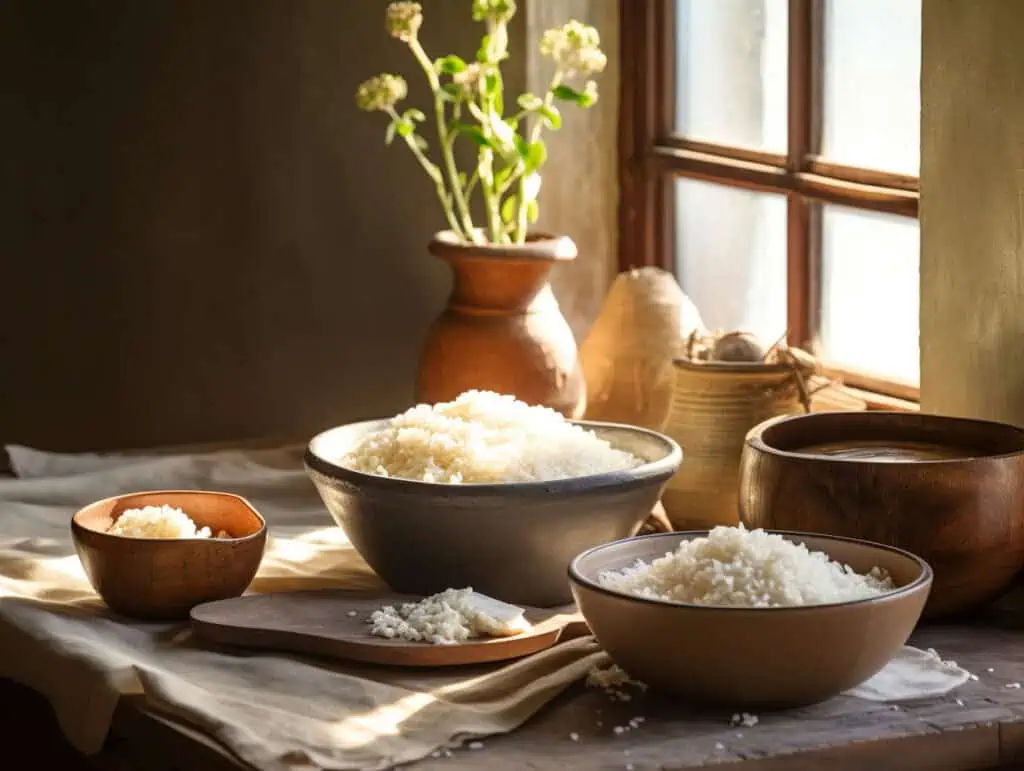
- 1 cup medium grain rice
- ¼ cup glutinous rice
- 1¼ cup filtered water
- ¾ cup + 1 tablespoon sugar
For Quick Method (Optional):
- Additional ingredient: ½ teaspoon active dry yeast
Equipment
- Earthenware bowl (palayok): Traditional fermentation vessel that maintains optimal temperature for developing complex flavors
- Food processor or blender: Essential for achieving the perfectly smooth batter consistency required for authentic texture
- Puto molds (small metal or plastic molds): Creates uniform bite-sized portions with traditional appearance
- Steamer (kawa or bamboo steamer): Provides gentle, even cooking through steam circulation
- Plastic wrap: Controls the fermentation environment while allowing gases to escape
- Toothpicks: Creates ventilation holes for proper fermentation and testing doneness
- Silicone brush: For thoroughly greasing molds to ensure clean release of finished puto
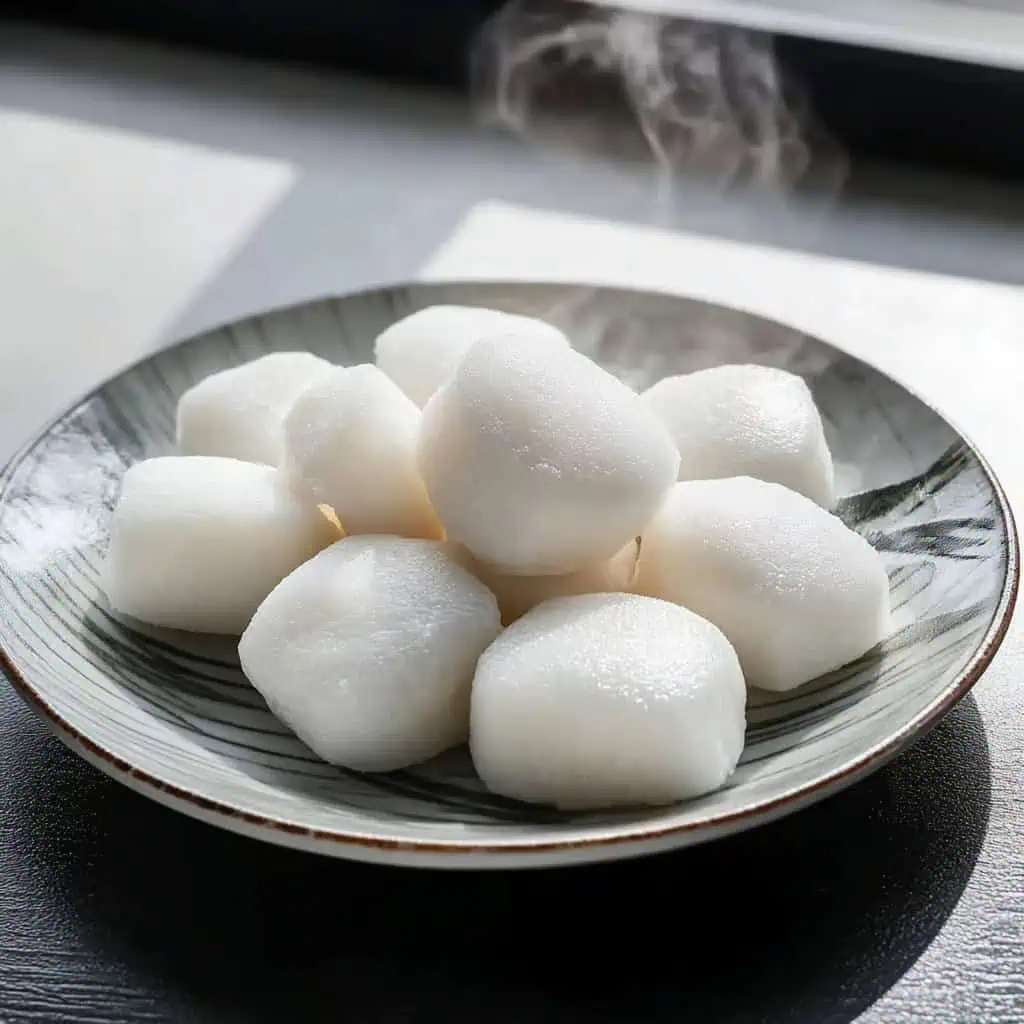
How To Make
- In an earthenware bowl or palayok, combine 1 cup medium grain rice and ¼ cup glutinous rice. Add 1¼ cup filtered water to cover the rice by one inch. Let this mixture soak at room temperature for two full days, keeping the bowl in a dark, quiet spot in your kitchen.
- After soaking, drain the rice but save all the soaking liquid. Put your soaked rice in a food processor. Blend on high speed, adding one tablespoon of sugar and the saved liquid little by little, until it becomes as smooth as pancake batter.
- Pour this smooth mixture back into your earthenware bowl. Cover with plastic wrap and poke small holes in it with a toothpick. Place the bowl in a warm spot in your kitchen and let it ferment for three to four days. You'll know it's ready when the mixture gets thicker and smells slightly sour.
- If you're short on time, you can add ½ teaspoon of yeast at this point and ferment for just 12 hours instead, though the flavor won't be as rich.
- After fermentation, gently stir in ¾ cup sugar, being careful not to overmix. Pour the batter into greased puto molds, filling each about ¾ full. Let them sit for one hour until you see bubbles on top.
- Get your steamer ready with boiling water. Place the filled molds in the steamer and cook over medium-high heat for 15-20 minutes. Check if they're done by inserting a toothpick - it should come out clean.
- Let the puto cool for about 3-5 minutes before gently removing them from the molds. They should be soft and chewy, with a gentle fermented smell. These taste best while warm but stay nice at room temperature for several hours.
- If you're making a big batch, steam them in several rounds, making sure to keep the water at a steady boil. Add hot water to the steamer as needed to keep the steam consistent.
- For the best results, enjoy these little rice cakes fresh from the steamer, when they're still warm and at their most tender. Store any leftovers in an airtight container and steam briefly to reheat.

Tips from Lola's Kitchen
For Perfect Fermentation:
- Always use ceramic or earthenware for fermentation as metal containers can react with the fermentation process and affect the taste
- Select fresh rice, not aged, for the best texture and fermentation results
- Place your fermentation container in a dark, draft-free spot where temperature remains consistent
- Look for small bubbles forming on the surface and a slightly sour aroma to indicate proper fermentation
- If your kitchen is cold, place the fermenting batter in the oven with just the light on for gentle warmth
For Ideal Steaming:
- Steam puto in small batches to maintain consistent temperature and even cooking
- Keep steamer water at a gentle boil - too vigorous and it may create uneven texture
- Cover steamer lid with a clean kitchen towel to prevent condensation from dripping onto the puto
- Allow steamed puto to cool slightly before removing from molds to prevent tearing
- When removing from molds, run a thin knife around the edges for clean release
Traditional Serving Suggestions
- Serve warm or at room temperature for authentic experience
- Pair with hot coffee or traditional ginger tea (salabat) for a balanced flavor combination
- Enjoy as a traditional breakfast item alongside chocolate rice porridge (champorado)
- Serve as popular merienda (afternoon snack) with freshly brewed black coffee
- Present on banana leaves for authentic presentation at special gatherings
Substitutions
- For medium grain rice: Japanese short-grain rice works as a suitable alternative with similar starch content
- For glutinous rice: Sweet rice or mochigome can be substituted in the same proportion
- For refined sugar: Raw sugar (muscovado) adds depth and complexity to the flavor profile
- For active dry yeast: Fresh yeast can replace dry yeast in the quick method (use twice the amount)
- For earthenware container: A glass jar or ceramic bowl can substitute, though fermentation may progress differently
Troubleshooting
Dense or Heavy Texture
- Cause: Batter was too thick or underfermented
- Solution: Ensure proper water-to-rice ratio and allow full fermentation time; fermentation should create noticeable bubbles
Overly Sour Flavor
- Cause: Fermented too long or at too high a temperature
- Solution: Monitor fermentation closely and stop when slightly sour; keep in cooler area if kitchen is warm
Puto Not Rising Properly
- Cause: Temperature too low during steaming or dead yeast (in quick method)
- Solution: Ensure water is at a full boil before and during steaming; test yeast activity before adding to quick method
Sticky or Gummy Interior
- Cause: Undermixed batter or incorrect rice ratio
- Solution: Blend thoroughly until completely smooth; maintain the proper ratio of regular to glutinous rice
Wet or Watery Puto
- Cause: Undercooked or condensation dripped onto cakes
- Solution: Steam for full recommended time; cover steamer lid with cloth to catch condensation
Storage & Reheating
Room Temperature Storage
- Keep in airtight container for up to 1 day
- Line container with banana leaves or parchment for authentic moisture retention
Refrigerator Storage
- Store in sealed container for 3-4 days
- Allow to come to room temperature before reheating for best texture
Freezer Storage
- Freeze in single layer, then transfer to airtight container
- Will keep up to 1 month without significant texture loss
- Thaw overnight in refrigerator before reheating
Reheating Methods
- Steam for 2-3 minutes (preferred method for authentic texture)
- Microwave for 15-20 seconds on medium power (quick option)
- Wrap in banana leaf and steam for enhanced flavor when reheating
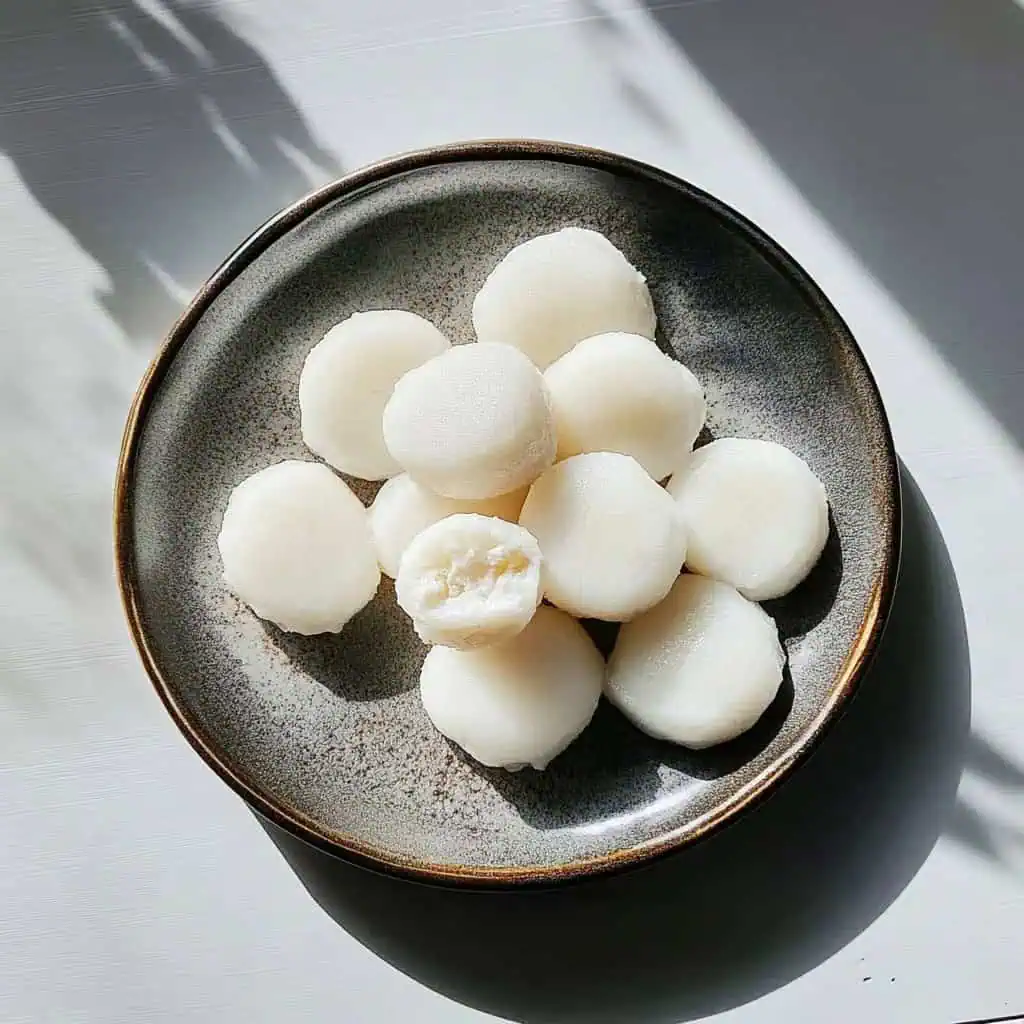
FAQ
Can I use regular rice only instead of the rice mixture?
No, the specific ratio of medium grain to glutinous rice is essential for achieving the authentic chewy texture of Puto Calasiao. Using only regular rice would result in a different texture that lacks the signature elasticity.
Why is earthenware recommended for fermentation?
Earthenware provides consistent temperature regulation and natural porosity that allows the proper development of beneficial bacteria during fermentation. This traditional method contributes significantly to the complex flavor profile that makes authentic Puto Calasiao so special.
Can I speed up the fermentation process?
Yes, you can use the quick yeast method described in the recipe, but be aware that the flavor will be less complex. The traditional slow fermentation develops nuanced flavor compounds that cannot be replicated with shortcuts.
How can I tell when the fermentation is complete?
The batter will develop a slightly sour aroma (pleasant, not sharp), increase in volume by about 50%, and show small bubbles throughout. The texture will also become slightly thicker but still pourable.
Why are my puto not as white as traditional ones?
The brilliant white color comes from using fresh rice and proper fermentation. Using aged rice or fermenting too long can result in a slightly grey or off-white color. Proper washing of rice before soaking also helps achieve the characteristic white appearance.
Can I make this recipe vegan?
This recipe is naturally vegan as it contains only rice, water, and sugar. No animal products are used in traditional Puto Calasiao.
What's the difference between Puto Calasiao and other Filipino puto varieties?
Puto Calasiao is distinguished by its smaller size, chewier texture, and distinctive fermentation process. Unlike other puto varieties that may use rice flour or additional leavening agents, authentic Puto Calasiao relies solely on natural fermentation.
How many calories are in each piece of Puto Calasiao?
Each bite-sized piece contains approximately 25-30 calories, making them a relatively light snack option compared to other Filipino desserts or pastries.
Related
Looking for other recipes like this? Try these:
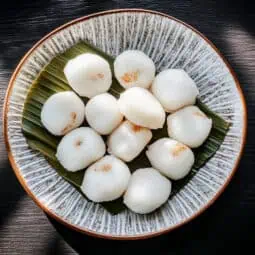
Authentic Puto Calasiao (Traditional Filipino Rice Cake)
Equipment
- Earthenware bowl (palayok) Traditional fermentation vessel that maintains optimal temperature
- Food processor or blender For achieving smooth batter consistency
- Puto molds (small metal or plastic molds) Creates uniform bite-sized portions
- Steamer (kawa or bamboo steamer) For gentle steam cooking
- Plastic wrap Controls fermentation environment
- Toothpicks Creates ventilation holes
- Silicone brush For greasing molds
Ingredients
For Traditional Method:
- 1 cup medium grain rice bigas na katamtaman
- ¼ cup glutinous rice malagkit
- 1¼ cup filtered water tubig
- ¾ cup + 1 tablespoon sugar asukal
For Quick Method:
- Additional ingredient: ½ teaspoon active dry yeast lebadura
Instructions
- In an earthenware bowl or palayok, combine 1 cup medium grain rice and ¼ cup glutinous rice. Add 1¼ cup filtered water to cover the rice by one inch. Let this mixture soak at room temperature for two full days, keeping the bowl in a dark, quiet spot in your kitchen.
- After soaking, drain the rice but save all the soaking liquid. Put your soaked rice in a food processor. Blend on high speed, adding one tablespoon of sugar and the saved liquid little by little, until it becomes as smooth as pancake batter.
- Pour this smooth mixture back into your earthenware bowl. Cover with plastic wrap and poke small holes in it with a toothpick. Place the bowl in a warm spot in your kitchen and let it ferment for three to four days. You'll know it's ready when the mixture gets thicker and smells slightly sour.
- If you're short on time, you can add ½ teaspoon of yeast at this point and ferment for just 12 hours instead, though the flavor won't be as rich.
- After fermentation, gently stir in ¾ cup sugar, being careful not to overmix. Pour the batter into greased puto molds, filling each about ¾ full. Let them sit for one hour until you see bubbles on top.
- Get your steamer ready with boiling water. Place the filled molds in the steamer and cook over medium-high heat for 15-20 minutes. Check if they're done by inserting a toothpick - it should come out clean.
- Let the puto cool for about 3-5 minutes before gently removing them from the molds. They should be soft and chewy, with a gentle fermented smell. These taste best while warm but stay nice at room temperature for several hours.
- If you're making a big batch, steam them in several rounds, making sure to keep the water at a steady boil. Add hot water to the steamer as needed to keep the steam consistent.
- For the best results, enjoy these little rice cakes fresh from the steamer, when they're still warm and at their most tender. Store any leftovers in an airtight container and steam briefly to reheat.
Tips from Lola's Kitchen
- Use ceramic or earthenware for fermentation - metal can affect taste
- Rice should be fresh, not aged, for best texture
- Place fermentation container in a dark, draft-free spot
- Look for small bubbles and slightly sour aroma to indicate proper fermentation
- Steam in batches to maintain consistent temperature
Nutrition
The Story Behind Puto Calasiao
The humble origins of Puto Calasiao trace back generations through the kitchens of Pangasinan's skilled home cooks, where this extraordinary rice cake emerged as a testament to Filipino culinary ingenuity. In the heart of Calasiao, a municipality renowned for its rice cultivation, local families discovered that fermenting a precise blend of medium-grain and glutinous rice yielded something remarkable - a delicate, chewy rice cake unlike any other in the Philippine archipelago.
What began as a home-based enterprise in the early 20th century has transformed into the economic cornerstone of Calasiao. The town's strategic location along major trade routes in Pangasinan province helped establish these bite-sized delicacies as a sought-after pasalubong (homecoming gift). Such was their impact on the local economy that these diminutive rice cakes earned the moniker "white gold," reflecting both their appearance and their value to the community.
The tradition of crafting Puto Calasiao remains largely unchanged, passed down through generations of families who guard their precise fermentation techniques. Each earthenware vessel, or palayok, houses a living culture that transforms simple rice into complex flavors through natural fermentation. This process, typically spanning three to four days, develops the signature subtle sourness and ethereal texture that distinguishes authentic Puto Calasiao from other Filipino rice cakes.
Today, visitors to Calasiao encounter streets lined with vendors offering these pristine white delicacies, often still warm from traditional bamboo steamers. The town's dedication to preserving this culinary heritage earned recognition from the Department of Trade and Industry, which acknowledged Puto Calasiao as one of the region's premier products. Local authorities have since implemented quality standards to protect the authenticity of this beloved snack, ensuring that each bite-sized piece maintains the characteristics that have made it a symbol of Pangasinan's rich food culture.
The enduring popularity of Puto Calasiao speaks to its unique place in Filipino cuisine - a masterclass in transforming humble ingredients through time-honored techniques. While modern variations exist, including shortened fermentation methods using commercial yeast, traditionalists maintain that the authentic slow-fermented version offers unmatched complexity and depth of flavor, making these small but mighty rice cakes a true Philippine culinary treasure.
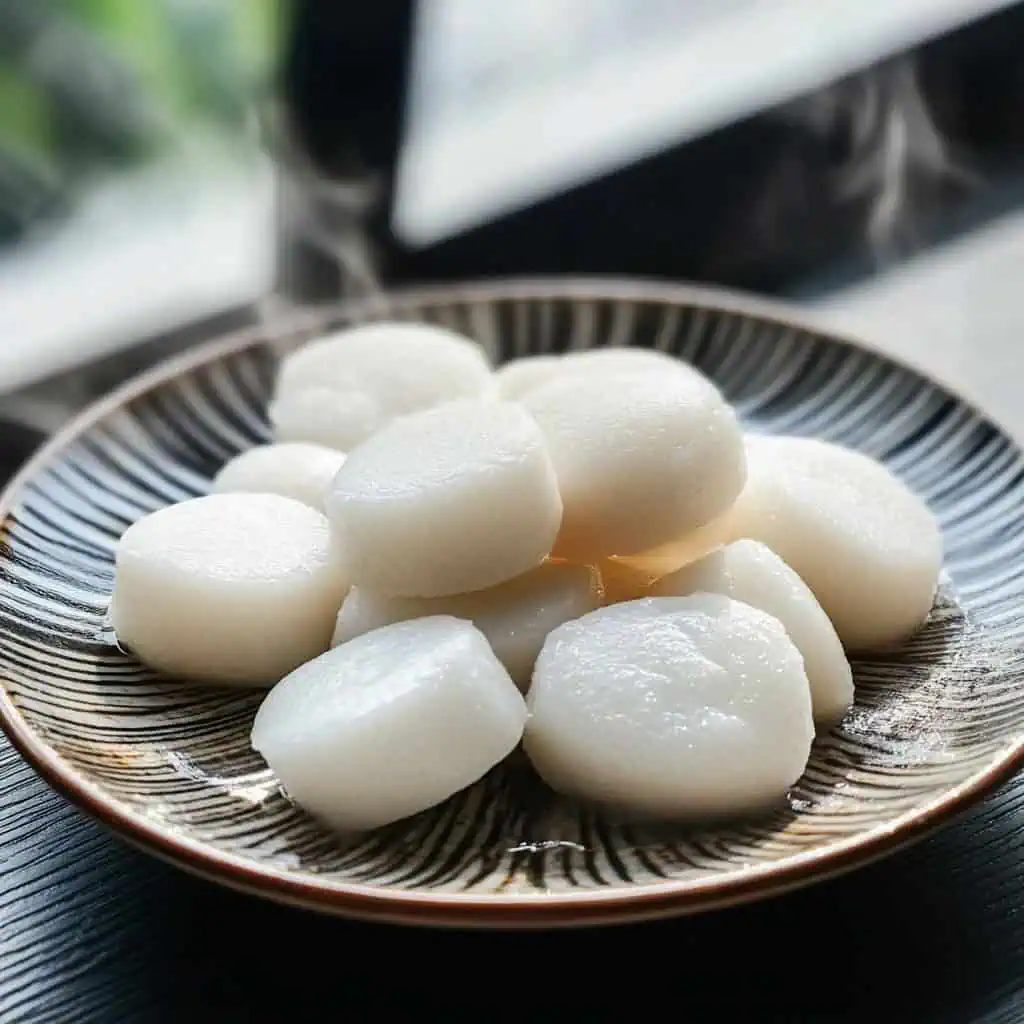









Comments
No Comments